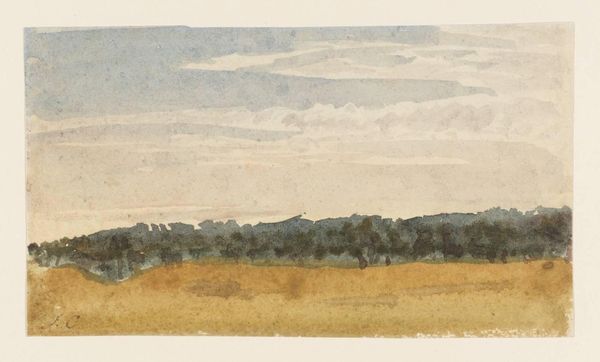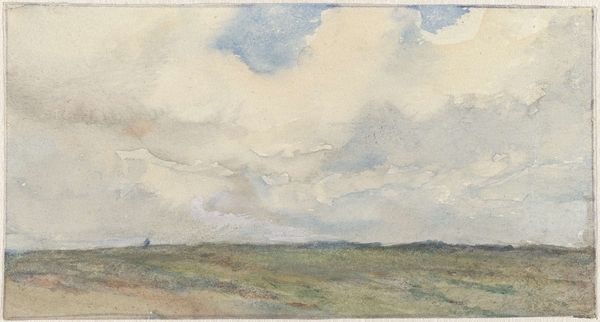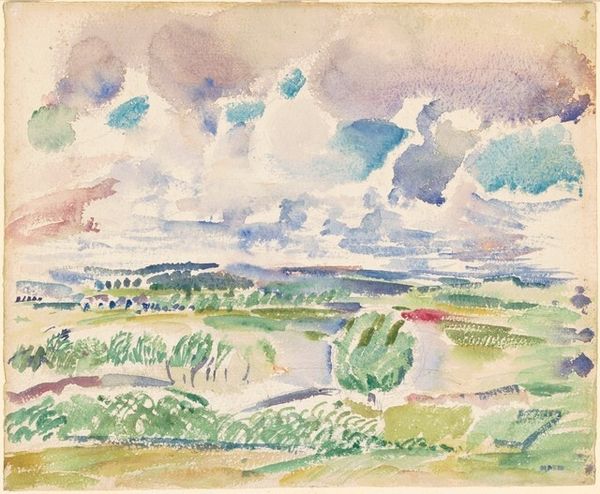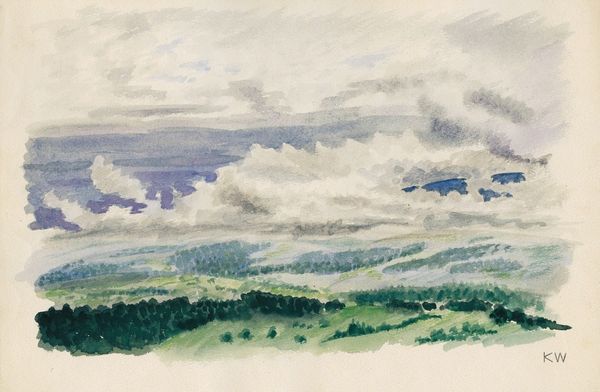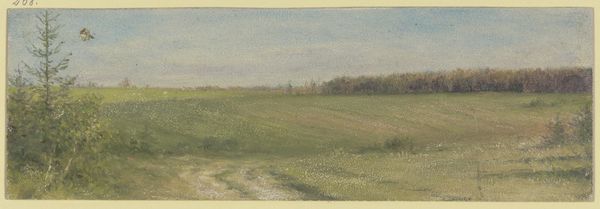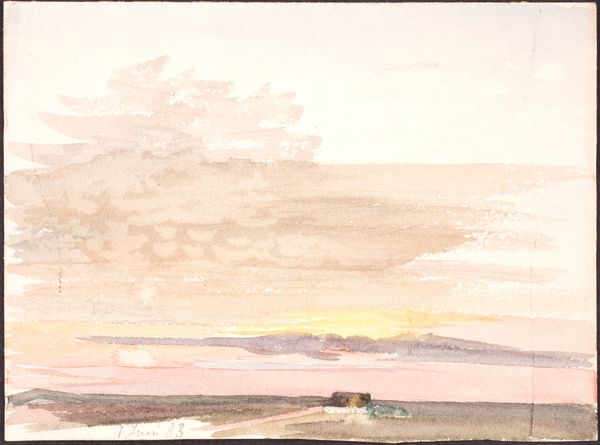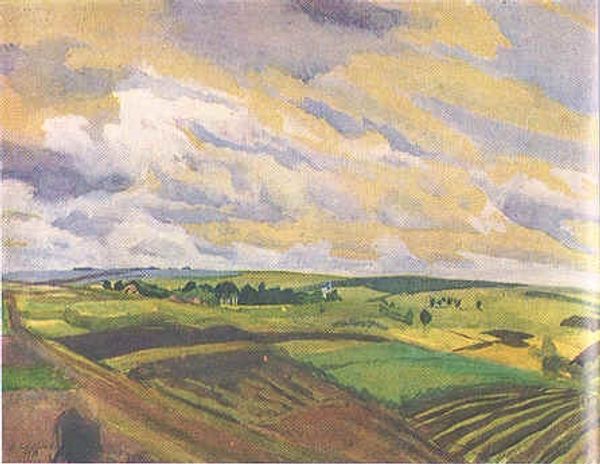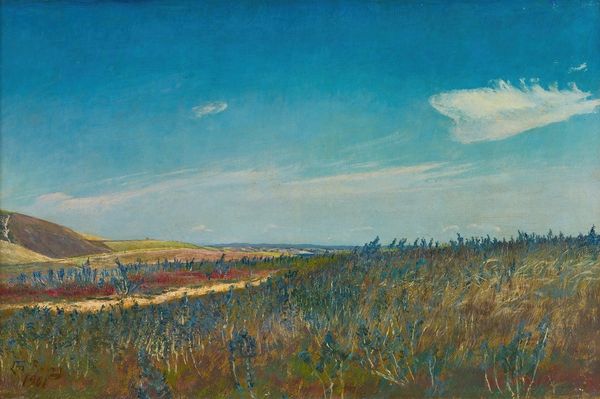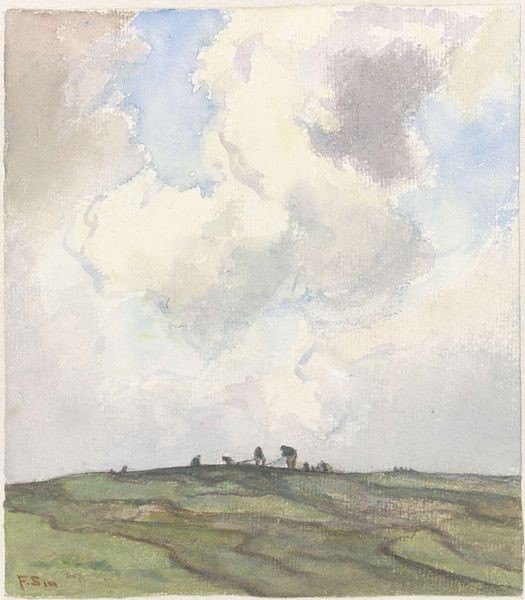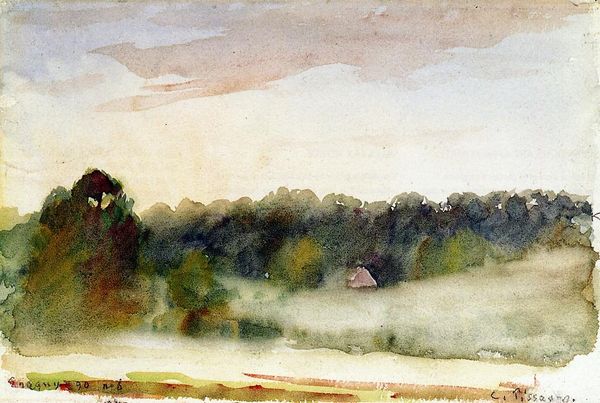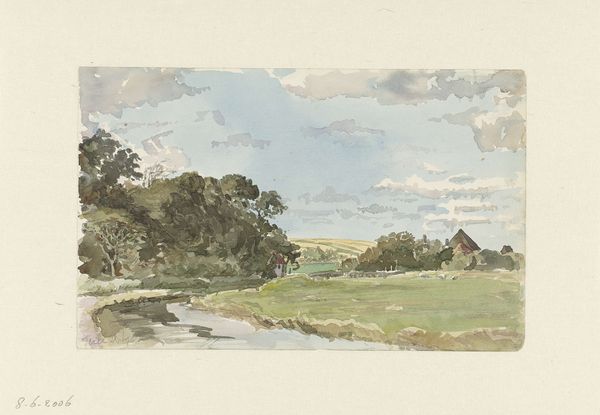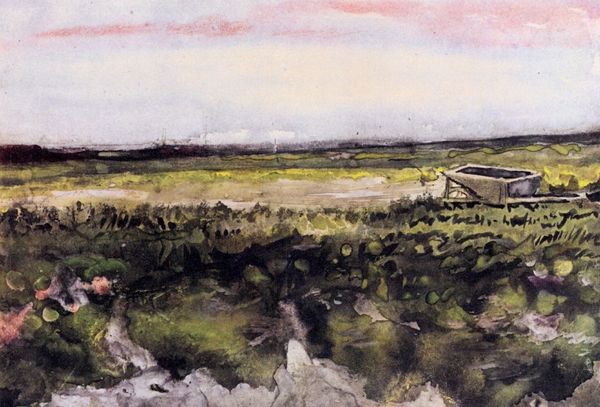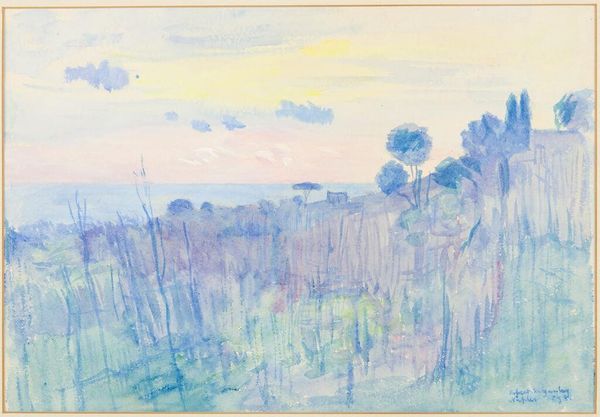
Copyright: Public domain
Curator: Ivan Kramskoy, a significant figure in Russian art, created this work entitled "Zhukovka" in 1879. It’s rendered in watercolor. What strikes you first about this landscape? Editor: Well, it’s incredibly serene. Almost dreamlike, with those soft, diffused colors. It evokes a sense of tranquility. Is it supposed to represent a specific place or a more idealized view? Curator: "Zhukovka" does depict a real location, a place favored by artists near Moscow. It became somewhat synonymous with the artistic pursuit of capturing the Russian soul through landscapes. Think of it as a plein air moment frozen in time. Editor: The use of watercolor gives it this ephemeral quality, like a memory fading gently at the edges. Did this choice of medium align with the Russian artistic identity you just mentioned? Curator: Absolutely. In the late 19th century, artists like Kramskoy aimed to capture the understated beauty of the Russian landscape. Watercolor, with its fluidity and capacity for subtle gradations, perfectly suited this aim. It stood in contrast to the more bombastic academic paintings favored by the Imperial Academy of Arts at the time, against which many artists including Kramskoy, famously rebelled. Editor: I see, it's not just pretty scenery then. This choice says something. Were audiences responsive? Curator: Responses were varied. For some, these intimate landscapes offered a welcome alternative to grand historical narratives. For others, particularly within the establishment, they were deemed too simple, too provincial, and insufficiently “important.” Landscape as a politically loaded aesthetic choice...hard to imagine today. Editor: It’s funny, how something so gentle could ruffle feathers. Looking at it now, I’m most moved by the clouds; they’re almost characters in themselves, bearing the weight of the sky yet rendered so delicately. Curator: The clouds certainly give the landscape its dynamism, a reminder of the changing moment. And what appeared as simple provincial scene, became in effect, Kramskoy´s vehicle for the construction of new approaches in Russian painting. Editor: Well, I've got a newfound respect for subtle rebellion! Thank you for shedding light on the painting´s nuanced power. Curator: A pleasure! I hope viewers find that, beyond its calming presence, this watercolor holds a certain quiet strength, too.
Comments
No comments
Be the first to comment and join the conversation on the ultimate creative platform.
